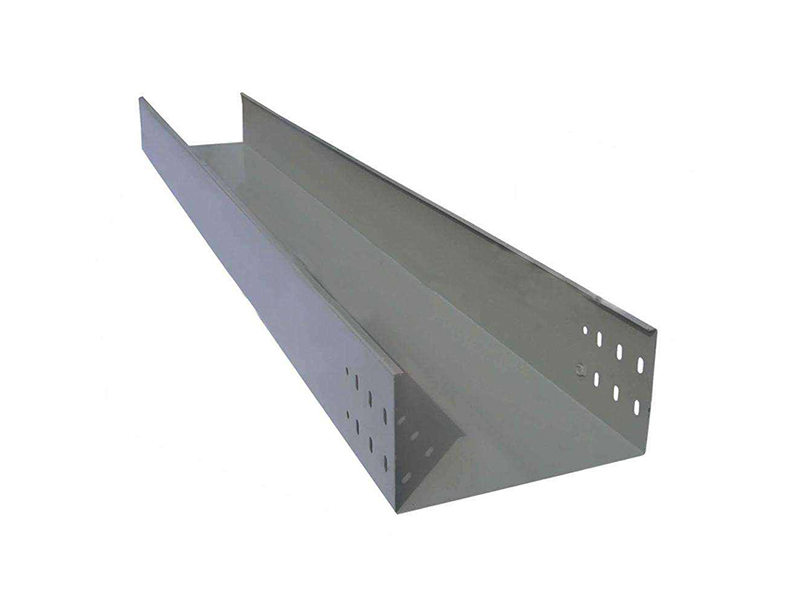济南苏鑫电缆桥架有限公司
客户咨询热线
0531-85767688
售后热线:15668327566
联系基地:山东省 德州市协同发展产业园D06幢
文章来源:https://www.sddlqj.cn/ 作者:电缆桥架厂家发布时间:2025-07-21 浏览次数:1
在电气布线系统中,电缆桥架和支架都是不可或缺的组成部分,但二者在功能定位、结构组成、应用场景等方面存在显著差异。明确二者的区别,有助于在实际工程中正确选择和使用,确保电缆敷设的与。
In electrical wiring systems, cable trays and brackets are indispensable components, but there are significant differences between the two in terms of functional positioning, structural composition, and application scenarios. Clarifying the difference between the two is helpful for selecting and using them correctly in practical engineering, ensuring the safety and efficiency of cable laying.
功能定位的不同是电缆桥架与支架核心的区别。电缆桥架是一个完整的结构化系统,其主要功能是为电缆提供的支撑、保护和管理。它不仅能承载电缆的重量,还能通过自身的框架结构将电缆有序排列,避免线缆杂乱缠绕,同时在一定程度上抵御外界环境的影响,如灰尘、水汽、机械碰撞等。此外,电缆桥架还为电缆的敷设、检修和扩容提供了便利的通道,是电缆运行的 “载体”。而支架的功能相对单一,主要是作为支撑构件,将电缆或电缆桥架固定在墙体、天花板、地面等基础结构上,仅起到承载和固定的作用,不具备对电缆的管理和保护功能。简单来说,桥架是电缆的 “运行轨道”,而支架是 “轨道的固定装置”。
The difference in functional positioning is the core difference between cable trays and brackets. Cable tray is a complete structured system, whose main function is to provide comprehensive support, protection, and management for cables. It can not only bear the weight of cables, but also arrange them in an orderly manner through its own frame structure, avoiding tangled cables and to some extent resisting external environmental influences such as dust, water vapor, mechanical collisions, etc. In addition, cable trays provide convenient channels for cable laying, maintenance, and expansion, serving as the "carrier" for cable operation. The function of the bracket is relatively single, mainly serving as a supporting component to fix cables or cable trays to basic structures such as walls, ceilings, and floors. It only plays a role in bearing and fixing, and does not have the function of managing and protecting cables. Simply put, the cable tray is the "running track" of the cable, while the bracket is the "fixing device of the track".
结构组成上,电缆桥架具有更复杂和完整的体系。它通常由托盘、梯架、槽体等主体部分,以及支架、托臂、连接件、盖板等辅助配件共同构成。主体部分根据不同的结构形式(如托盘式、梯架式、槽式),设计有特定的承载和防护结构,能够直接容纳和约束电缆;辅助配件则用于实现桥架的安装固定、路径延伸和防护增强。而支架的结构相对简单,多为单个或成组的杆状、板状构件,如角铁支架、槽钢支架等,通过焊接或螺栓连接固定在基础结构上,其结构设计仅以满足承载强度为核心,没有复杂的辅助配件。
In terms of structural composition, cable trays have a more complex and complete system. It usually consists of main parts such as trays, ladders, and troughs, as well as auxiliary accessories such as brackets, support arms, connectors, and cover plates. The main body is designed with specific load-bearing and protective structures based on different structural forms, such as tray type, ladder type, and trough type, which can directly accommodate and restrain cables; Auxiliary accessories are used to achieve the installation and fixation, path extension, and protection enhancement of the bridge frame. The structure of the bracket is relatively simple, mostly consisting of single or grouped rod-shaped or plate-shaped components, such as angle iron brackets, channel steel brackets, etc., which are fixed to the foundation structure through welding or bolt connections. Its structural design is only focused on meeting the load-bearing strength, without complex auxiliary accessories.

在应用方式上,电缆桥架和支架的配合与独立使用情况不同。电缆桥架可以独立实现电缆的敷设,其自身的框架结构能够直接承载电缆,支架仅作为桥架的固定辅助。例如,在大型厂房的电缆敷设中,桥架通过支架固定在厂房顶部,电缆则直接放置在桥架内部。而支架除了支撑桥架外,也可以单独用于电缆的敷设,即 “电缆直接敷设在用支架支撑的明敷方式”,此时电缆直接绑扎在支架上,由支架承担电缆的重量。但这种方式仅适用于电缆数量少、敷设路径简单的场景,当电缆数量多、规格复杂时,必须依赖电缆桥架进行有序管理,支架则作为桥架的支撑辅助存在。
In terms of application, the coordination and independent use of cable trays and brackets are different. Cable trays can independently lay cables, and their own frame structure can directly support cables. The brackets only serve as fixing aids for the trays. For example, in the cable laying of large factories, the cable tray is fixed to the top of the factory through brackets, and the cables are directly placed inside the cable tray. In addition to supporting the cable tray, the bracket can also be used separately for cable laying, that is, "the cable is directly laid in the exposed laying method supported by the bracket". At this time, the cable is directly tied to the bracket, and the weight of the cable is borne by the bracket. But this method is only suitable for scenarios where the number of cables is small and the laying path is simple. When the number of cables is large and the specifications are complex, it is necessary to rely on cable trays for orderly management, and brackets serve as auxiliary supports for the trays.
适用场景的差异也体现了二者的区别。电缆桥架适用于电缆数量多、规格多样、敷设路径复杂的场合,如高层建筑、工业车间、大型等。在这些场景中,电缆需要分层次、分区域敷设,桥架的结构化设计能确保线缆有序排列,便于管理和维护。而支架更适合电缆数量少、敷设路径简单的情况,如小型建筑的局部电缆敷设、户外简单线路架设等。此外,在环境条件特殊的场合,如潮湿、腐蚀环境,电缆桥架会采用相应的防腐材质(如玻璃钢、铝合金),并通过自身的封闭结构提供防护;而支架则仅作为固定构件,其材质选择以满足支撑强度和耐腐蚀性为主,不直接参与对电缆的防护。
The difference in applicable scenarios also reflects the difference between the two. Cable trays are suitable for occasions with a large number of cables, diverse specifications, and complex laying paths, such as high-rise buildings, industrial workshops, large shopping malls, etc. In these scenarios, cables need to be laid in layers and zones, and the structured design of cable trays can ensure that cables are arranged in an orderly manner, making it easy to manage and maintain. And the bracket is more suitable for situations where the number of cables is small and the laying path is simple, such as local cable laying in small buildings, outdoor simple line installation, etc. In addition, in special environmental conditions such as humid and corrosive environments, cable trays will use corresponding anti-corrosion materials (such as fiberglass, aluminum alloy) and provide protection through their own enclosed structure; The bracket is only used as a fixed component, and its material selection is mainly based on meeting the requirements of supporting strength and corrosion resistance, without directly participating in the protection of the cable.
本文由山东电缆桥架友情奉献.更多有关的知识请点击:http://www.sddlqj.cn我们将会对您提出的疑问进行详细的解答,欢迎您登录网站留言.
This article is a friendly contribution from Shandong Cable Bridge For more information, please click: http://www.sddlqj.cn We will provide detailed answers to your questions. You are welcome to log in to our website and leave a message
 济南电缆桥架作为电力、通讯、交通等范畴支撑设备,其牢靠性与耐久性成为工程质量的关键指标
济南电缆桥架作为电力、通讯、交通等范畴支撑设备,其牢靠性与耐久性成为工程质量的关键指标
跟着全球工业化与城市化进程的加快,电缆桥架作为电力、通讯、交通等范畴支撑设备,其牢靠性与耐久性成为工程质量的要害指标。热镀锌电缆桥架凭借其优异的防腐功能、高强度承载才能及特性,正逐渐成为市政工
TIME:2026-01-05